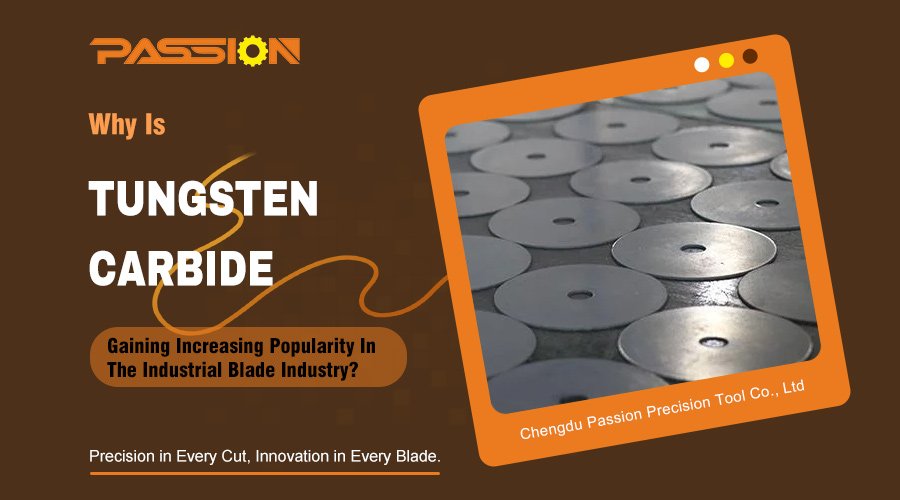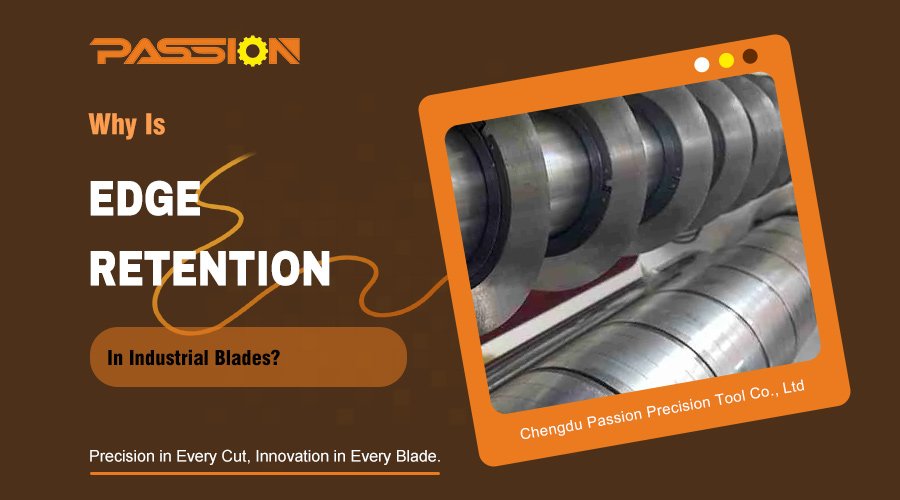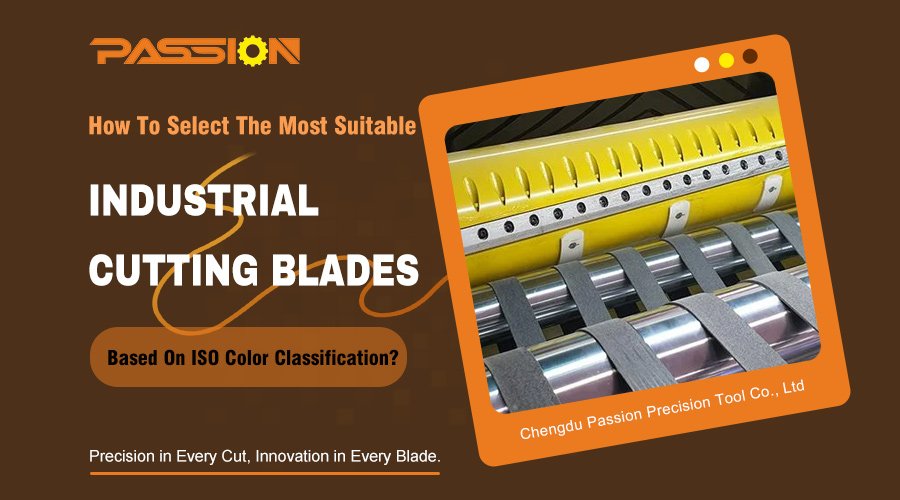In the field of industrial knives, serrated knives are widely used in the paper, food, metal, plastic, textile and wood industries due to their unique cutting method. The essential advantage of serrated knives is that the cutting action is accomplished step by step through intermittent contact between the teeth and the material, resulting in efficient, stable and targeted machining performance.
The shape of the teeth is the core of a serrated knife. Different tooth shapes not only determine the cutting efficiency and kerf quality, but also directly affect the life and application of the knife. In this article, we will start from the elements of tooth shape design, systematically comb eight common types of tooth shape, and combined with application scenarios and industry practice, discuss the role and development trend of tooth shape in industrial production.
Basic Elements Of Tooth Shape Design
The design of a serrated knife’s tooth profile involves a combination of geometric and engineering considerations. The four core elements are tooth pitch, tooth height, tooth angle and tooth top shape. In addition, the actual design should be optimized in combination with the material of the cutter body, the machining process, and the design of the chip removal channel.
1. Pitch
Pitch is the distance between two adjacent teeth, which is the key to determine the number of teeth.
- Large pitch: Small number of teeth, centralized cutting force, strong chip removal ability, suitable for thick plates or hard materials.
- Small tooth pitch: More teeth, continuous cutting action, flat cutting surface, suitable for thin sheet, brittle or soft materials.
- Variable tooth pitch: Some of the knives are designed with unequal tooth pitches to minimize resonance and cutting ripples.
2. Tooth Height
Tooth height is the vertical height from the tooth tip to the tooth root.
- Large tooth height: Large depth of cut, good for fast cutting and chip removal, but easy to produce burrs.
- Tooth height is small: Smooth cutting, flat cut, but the cutting force is limited.
3. Tooth Angle
Tooth Angle is the angle between tooth surface and cutting direction, which directly affects cutting sharpness and tooth strength.
- Large angle: Sharp, suitable for soft materials, but low strength.
- Small angle: High strength, suitable for hard materials, but cutting resistance is large.
4. Tooth Tip Shape
Tooth Tip Shape determines the way the teeth of the cutter contact the material. The common forms are pointed top, rounded top, wavy top, flat head, forked top, etc.
Table Of Relationship Between Tooth Shape Elements And Performance:
Elements | Parameter Trends | Cutting Characteristics | Typical Applications |
Pitch | Large → Small | Concentration of cutting force → fine cutting | Thick hard materials → thin brittle materials |
Tooth Height | Large → Small | Higher chip evacuation capacity → Neater cuts | Fast cutting in thick materials → Fine machining |
Tooth Angle | Large → Small | Sharp but fragile → stable but high resistance | High speed cutting of soft materials → hard materials with high wear resistance |
Tip Shape | Sharp → round/flat | Sharp and fast cutting → long life/straight cut | Efficient cutting → long life or neat cuts |
8 Common Types Of Tooth Shapes
Based on geometric characteristics and processing applications, common industrial serrated knife tooth profiles can be categorized into the following nine types, each of which is explained below:
1. Straight Tooth
- Characteristics: Straight tooth shape, the simplest structure.
- Advantages: High stability, low manufacturing cost.
- Disadvantages: Limited sharpness, poor adaptability.
- Application: Wood, plastic, general packaging materials.

2. V-shaped Tooth
- Characteristics: The top of the tooth is V-shaped sharp angle.
- Advantages: Cutting force is concentrated, suitable for rapid cutting.
- Disadvantages: Fast wear of tooth tip, limited life.
- Application: Sheet metal, fiber materials.

3. Round Tooth
- Characteristics: The top of the tooth is rounded, and the root of the tooth has a smooth transition.
- Advantages: Good wear resistance, long service life.
- Disadvantages: Sharpness is not as good as sharp teeth.
- Application: Paper, film, packaging industry.

4. Wavy Tooth
- Characteristics: The top of the tooth is wavy.
- Advantages: Soft cutting, prevent sticking.
- Disadvantages: Complicated processing.
- Applications: Food (bread, meat), rubber.

5. Fish-tail Tooth
- Characteristics: The top of the tooth is forked and resembles the tail of a fish.
- Advantages: Strong gripping power, suitable for flexible materials.
- Disadvantages: Difficult to manufacture.
- Applications: Textile, composite materials.

6. Flat-top Tooth
- Characteristics: Flat-top toothing.
- Advantages: Flat cut, strong impact resistance.
- Disadvantages: Low cutting sharpness.
- Applications: Wood grooving, cutting of hard plates.

7. Coarse Tooth
- Characteristics: Large tooth pitch, high tooth height.
- Advantages: Strong chip removal ability, suitable for thick materials.
- Disadvantages: Rough cut.
- Application: Thick wood, large size plastic parts.

8. Fine Tooth
- Characteristics: Small tooth spacing, high number of teeth.
- Advantages: Smooth cut, high fineness.
- Disadvantages: Low cutting speed.
- Application: Film, paper, precision machining.

Comparison Chart of Nine Tooth Profiles:
Tooth Profile Type | Characteristics | Advantages | Disadvantages | Application Areas |
Straight Teeth | Straight tooth profile | Stable, low cost | Limited sharpness | Wood, plastic |
V-Shaped Teeth | V-shaped sharp edge | High cutting force | Prone to wear | Thin metal sheets, fibers |
Round Teeth | Curved tooth tips | Long wear life | Less sharp
| Paper, film |
Serrated Teeth | Wavy tooth tips | Anti-stick, gentle cutting | Complex manufacturing | Food, rubber |
Fishtail Teeth | Forked tooth tips | Strong gripping force | High manufacturing difficulty | Textiles, composite materials |
Flat-Top Teeth | Straight tooth tips | Clean cuts | Low sharpness | Wood, hardboard |
Coarse Teeth | Wide tooth spacing, tall tooth height | Strong chip evacuation | Rough cut | Thick wood, large plastics |
Fine Teeth | Narrow tooth spacing, high tooth count | Smooth cut | Low cutting efficiency | Film, precision machining |
Tooth Profile Selection And Application Scenarios
Tooth profile selection should be determined by comprehensively evaluating material properties, machining objectives, and tool life.
1. By Material Type
Material Type | Recommended Tooth Profile | Reason |
Soft Materials | Sharp teeth, wavy teeth | Sharp cutting edge, prevents tearing |
Brittle Materials | Fine teeth, round teeth | Clean cuts, minimizes damage |
Hard Materials | V-shaped teeth, coarse teeth | High cutting force, excellent chip evacuation |
Tough Materials | Fishtail teeth, flat-head teeth | Strong grip, stable cutting |
2. According To Cutting Requirements
- High-Precision Cutting: Fine teeth, round teeth, flat-tip teeth
- High-Speed Cutting: Pointed teeth, V-shaped teeth
- Anti-Sticking: Serrated teeth
- Deep Cutting: Coarse teeth
3. Industry Application Cases
- Packaging Industry: Corrugated cardboard, film → Round teeth, fine teeth
- Food Industry: Bread, frozen meat → Serrated teeth
- Metal Industry: Sheet metal, stainless steel → V-shaped teeth
- Plastics & Rubber Industry: Thick plastics → Coarse teeth; Films → Fine teeth
- Textile Industry: Fabrics, composite fibers → Fishtail teeth
- Wood Industry: Thick wood panels → Coarse teeth; Furniture boards → Flat-tip teeth
Optimization Of Tooth Profile Design And Future Trends
With the advancement of industrial automation and smart manufacturing, tooth profile design is evolving in the following directions:
- Customization: Developing specialized tooth profiles tailored to different materials.
- Combined tooth profiles: Integrating coarse and fine teeth on a single knife to enhance versatility.
- Surface coating integration: Pairing tooth profiles with wear-resistant coatings to extend service life.
- CNC manufacturing: Achieving complex tooth profiles through high-precision CNC grinding.
The tooth profile of industrial saw blades is central to cutting performance. This article systematically reviews nine common tooth profiles (straight teeth, V-shaped teeth, rounded teeth, wavy teeth, fishtail teeth, flat-top teeth, pointed teeth, coarse teeth, fine teeth), combining profile characteristics with application scenarios.
Selecting the appropriate tooth profile can effectively enhance cutting efficiency, optimize cut quality, and extend knife life. In the future, driven by material diversification and advancements in machining equipment, tooth profile design will become increasingly refined and customized to meet more complex industrial demands.






